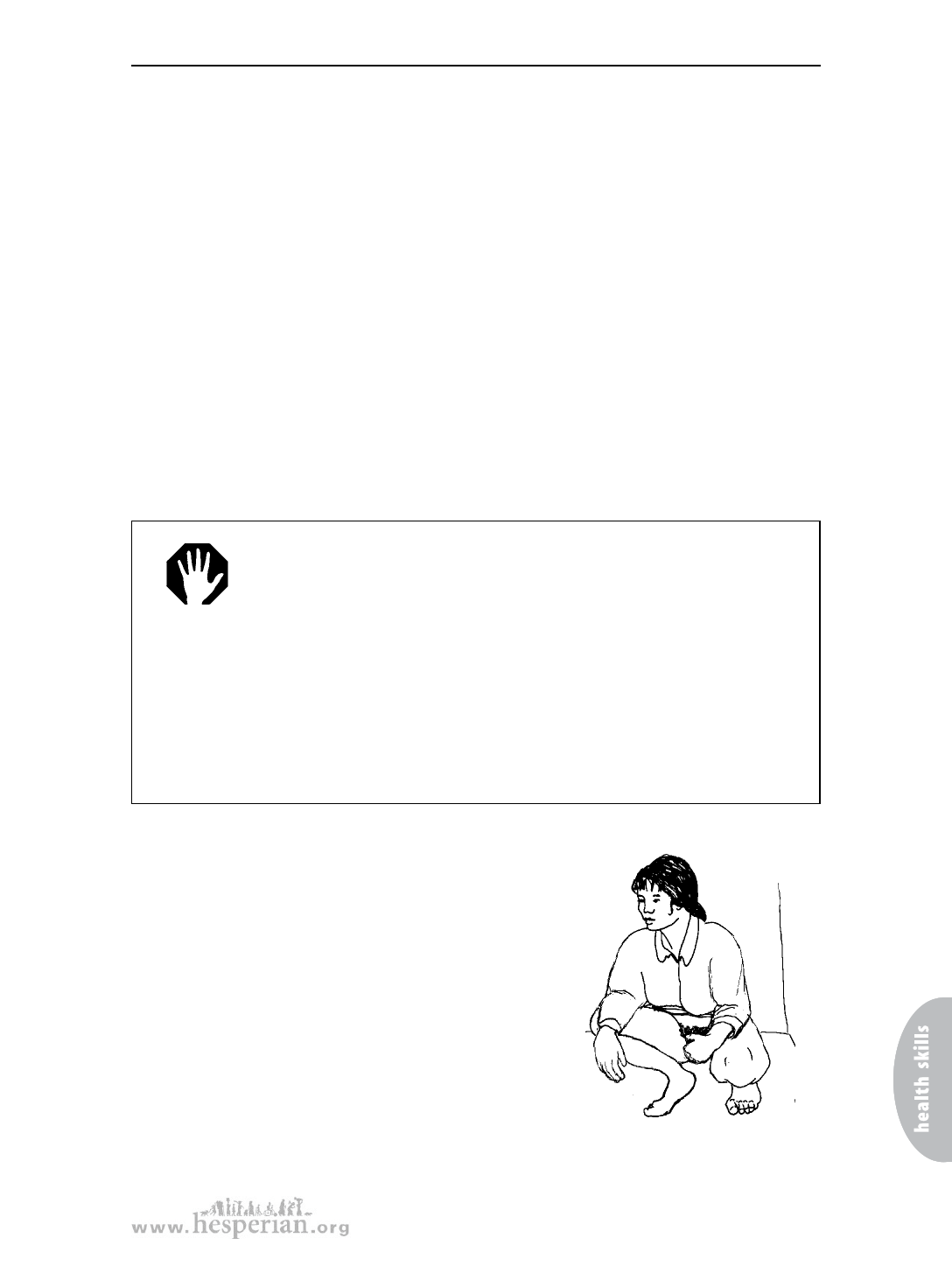
Choosing a family planning method
The IUD often causes changes in monthly bleeding, depending on the type of
IUD. The Copper T can cause heavier monthly bleeding with more painful
cramping. This extra loss of blood can cause anemia. The Mirena causes monthly
bleeding to become very light or stop altogether, but it can cause irregular
bleeding and spotting.
Women who have STIs, vaginal or womb infections, or HIV or AIDS, should
not use the IUD. These are some of the disadvantages or risks of the IUD:
• The IUD does not protect against HIV or other STIs. If a woman already has
an STI when an IUD is inserted, that infection can spread to her womb.
Womb infection can lead to infertility or other serious health problems.
• The IUD can cause miscarriage if a woman gets pregnant while using an IUD
or if she has one put in when she is pregnant.
• The woman cannot put in or take out the IUD herself. A health worker
must do it.
For these reasons, it is best if a woman who uses an IUD lives close to
medical center.
WARNING! A woman with an IUD should get medical help if
any of these danger signs appear:
• late or missed monthly bleeding or unusual spotting between
monthly bleeding
• pain in the belly that does not go away, or pain during sex
• s igns of infection: unusual discharge or bad smell from the
vagina, fever, chills, feeling ill
• IUD strings get shorter or longer, are missing, or the IUD can
be felt in the vagina
A woman with an IUD must check every month to be
sure it is still in place. The best time to check is after her
monthly bleeding.
First she should wash her hands. Then she should
reach into the vagina with 2 fingers and feel for the
strings of the IUD. They should be the same length
each month.
If the strings are shorter or longer, or if she
cannot feel the strings at all, the strings may have
moved up into the womb, or the IUD may have
fallen out. In this case, the woman should use
another method of family planning, and she should
get medical help.
311
A Book for Midwives (2010)